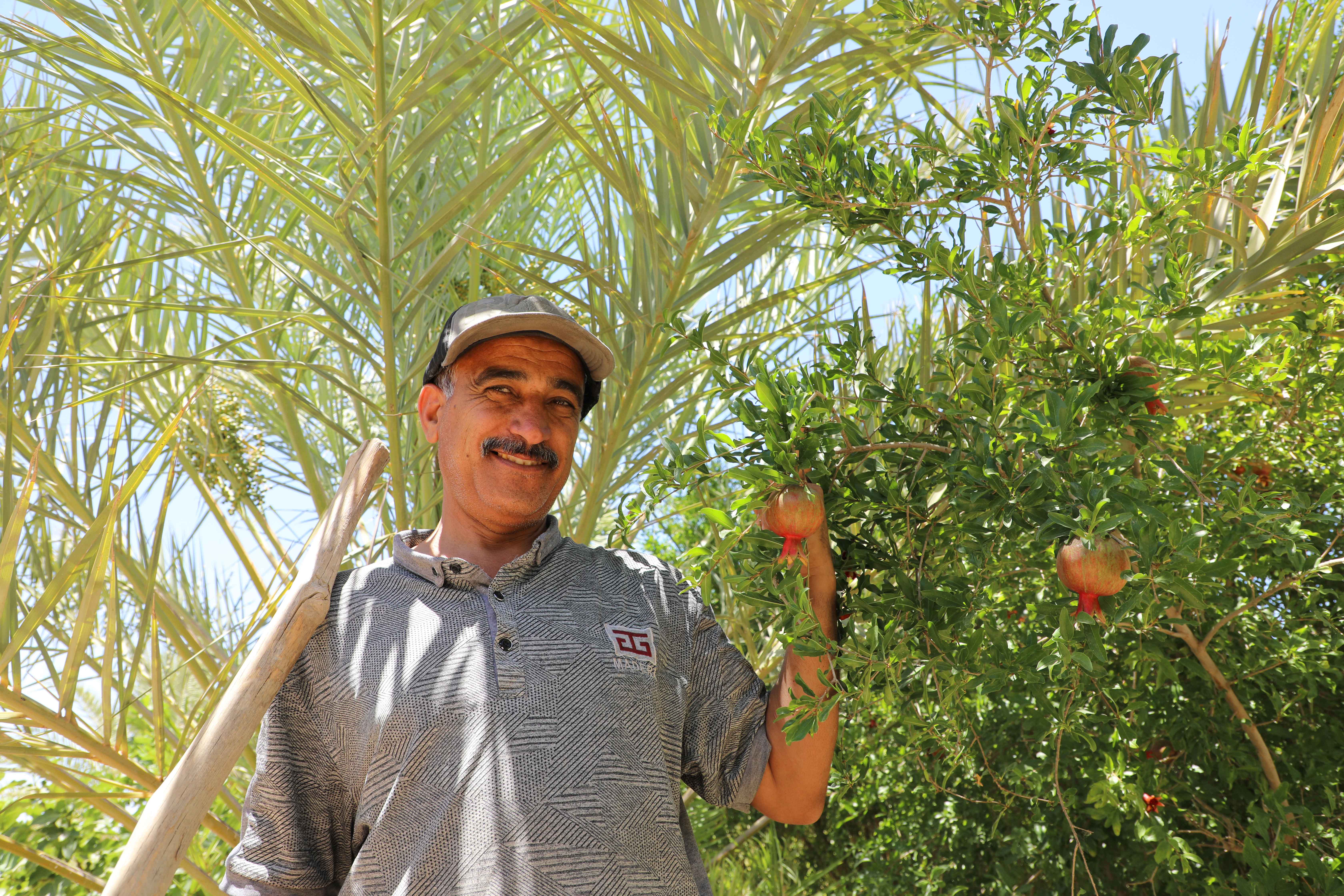Back to Life in Al-Zawiya Village: A Success Story in Resettling Displaced Communities
August 26, 2024

In a green area west of Haditha, between the villages of Al-Khasfa and Al-Maadheed, you can see Al-Zawiya village, a thriving community, that was left in ruins after the brutal conflict with ISIL, destroying more than 80% of the village. This devastation forced its residents, including Muhanad Hamid, a 49-year-old teacher and his family, to flee for safety.

Muhanad remembers the difficult times before support is provided by UNDP, with funding from USAID: "The war forced us to left home. I fled with my family to several places until we were able to reach the north of Iraq. After ISIL entered, no one stayed in the village. All the people were left homes."



With the village in shambles, basic services like electricity and water were destroyed. The destruction of the water treatment station, crucial for supplying the entire village, meant that residents had to travel long distances daily to fetch water. Even when the plant partially resumed operation, it couldn't meet the daily needs of the villagers. "Water was scarce and difficult to obtain," Muhanad explains. "We only got water every two days for two hours, and the water was not clean at all."All of this led to a financial burden on the people, as well as the spread of diseases.
Returning to Al-Zawiya, he was faced with a scene of utter devastation. The once-vibrant village was now a ghost town. Overwhelmed by the destruction, he and his neighbors faced the daunting task of rebuilding their homes. Despite the immense challenges, a glimmer of hope emerged with the support of UNDP, funded by USAID.



The rehabilitation of the Al-Zawiya water station marked a turning point. This project enabled over 1,000 people to benefit from the restored water supply, reviving basic services and breathing life back into the village. Beyond repairing the station, the program addressed the fluctuating water levels near Haditha Dam, which had posed significant challenges. By rehabilitating the intake station and installing three pipeline stations, the program ensured a steady and uninterrupted water supply to Al-Zawiya.

Eng. Ahmed Akram, assistant to the water Director, of Haditha Directorate, sheds light on the situation: “The people did not accept to return to their areas considering the lack of basic services. After the destruction of the station, we were working partially with less than 30% of the station’s capacity. Today, after its rehabilitation with the support of UNDP, funded by USAID, the station operates at its full capacity of 200 M3 (cubic meters) per hour, and we have also increased production capacity with additional tanks holding approximately 600 M3.”

The return of water proved to be a pivotal factor in encouraging families to return, ensuring access to safe drinking water, and creating a stable environment for resettlement. Muhanad says, “I am happy to see the services renovated and restored. We hope that this work will assure people that we can return to pre-war life.”
Muhanad concludes with gratitude and hope: “We are grateful for what we have achieved today after liberating the city, and we hope to receive more support to help us rebuild our village.”
With the support of the UNDP’s Funding Facility for Stabilization in Iraq (FFS) and the United States Agency for International Development (USAID), Al-Zawiya water treatment station has been rehabilitated. Today, the water station produces more than 200 M3 of water daily and stores over 600 M3, serving a village of more than 1,000 residents.

 Locations
Locations